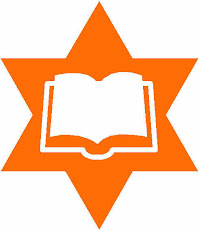I’ve recently completed a regional program for fifth graders on tzedakah/philanthropic giving.
It’s the middle program in a three-year sequence dealing with “giving Jewishly.” Year One (for fourth graders) focuses on doing things to help others and, appropriately so, is called “Mitzvah Mania.” Year Three (for sixth graders) focuses on the work done by our local Federation which provides support for local Jewish partner agencies and (also appropriately) is called “Kallah,” which means “community.”
The Year Two program (for fifth graders), the one I worked on, is called “Lev B’Lev” or “Heart to Heart.” Our primary focus, as I said, was on giving money. The program was funded in part – as are the others in the series – by a grant from our local Federation. Part of what makes this program unique is that the fifth graders bring a dollar with them to donate to the organizations they learn about in the morning’s program.
The project design called for the following:
- Development of three key concepts involved in deciding where to donate tzedakah.
- Development of curricular materials which can be used by classroom teachers prior to the program.
- Planning the program – organizing the structure, identifying the presenters, working with the hosting facility, purchasing materials
- Communicating effectively – with the directors of the schools participating; the classroom teachers; the presenters; and the students
- Analyzing and assessing the program upon completion.
As a result of my work this past year with the Mitzvah Heroes Fund, I found it relatively easy to decide on two of the three key concepts on which to base our program: Maimonides’ "Ladder of Tzedakah" and "Circles of Giving" (again, Maimonides).
The Ladder of Tzedakah outlines clearly Jewish responsibility for caring for the needy in our communities. Starting with “giving reluctantly and unwillingly,” one can move all the way “up” the ladder to “teaching someone how to provide for him or herself.” The particular point I asked teachers to make with their students is that giving tzedakah is a mitzvah, in the commandment sense of the word. No where does it say giving tzedakah is optional. Torah Aura has a neat instant lesson that we got for the teachers to use with their classes. Called “Rambam’s Rungs” (Rambam is another name for Maimonides), it provides students with an opportunity to consider where different scenarios fall on the tzedakah ladder.
The second concept addressed the question: “To whom do we give?”
This is an area of grave concern within the Jewish community: should Jews give only to Jewish organizations or should they give to non-Jewish organizations as well? Advocates come down strongly on either side of the question. Demographic data gathered within the last decade indicate that younger Jews are no longer supporting Jewish tzedakah organizations as their parents and grandparents did – many times with dire results for the agencies and the people they serve.
And yet, even in the days of Maimonides, we were encouraged to support the local communities in which we live, with the understanding that they were not entirely Jewish. I found some wonderful materials at JustAction, a joint project between Hillel – The Foundation for Jewish Campus Life and Panim – The Institute for Jewish Leadership and Values. I ultimately decided to include non-Jewish organizations as part of this program, basically for two reasons:
1) My belief that Jewish values should permeate ALL of our actions, including our involvement in the communities around us; and
2) the sixth grade program (see above) will focus specifically on the work that the Federation does by supporting its partner agencies.
The final concept I decided to focus on is one I’ve become much more adamant about as a result of my involvement as a co-founder of and the treasurer for the Mitzvah Heroes Fund. It also was almost a no-brainer in light of the publicity surrounding the shanda/scandal of Bernie Madoff: We would learn about “due diligence.” Just-Tzedakah has a wonderfully well-written guide called “Smart Tzedakah” (scroll down near the center bottom of the home page) which sets forth clearly things to look for in evaluating whether the organization one is sponsoring is a good custodian of the funds it receives.
In summary then, these were the three key concepts we based our program on:
- Maimonides’ Ladder of Tzedakah (How do we give?)
- Circles of Giving (To whom do we give?)
- Due Diligence (What’s "giving wisely"?)
Teachers were provided with source materials and some suggestions for implementation in advance of our program held on March 15th.
My next post will discuss how we implemented our concepts into the day's programming.






